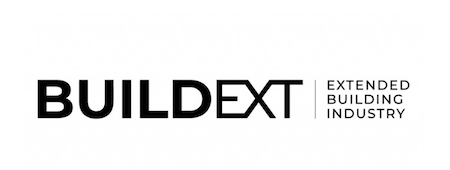Spot the iceberg under the Sugar cube
BIM, or Building Information Modeling, is the most significant innovation in the construction industry in the last fifty years that contributes to sustainable development more relentlessly than ever before.
How? Construction has an immense role in achieving at least five of the 17 global sustainability goals:

But how does it appear at the level of daily practice? Where is this kind of utilitarianism where without short-term interests in a tender can immediately erode long-term benefits of an investment?
Before joining BCSDH, we held a sort of self-examination – do we really meet the standards of the organization, are we really “worthy” to enter? Motivated as an office, we have been moving towards a sustainable direction for a long time. Therefore, we are now sitting on ergonomic chairs and sipping purified water under a lighting system controlled by Loxone, working on a supplier qualification system in a nearly paperless and plastic-free office environment. This is where we feel comfortable, the company’s culture is founded on respect for the environment and the people – and frankly, we do not mind working like that.
However, this is not the point.
We are working in an industry where these steps are not even the tip of the iceberg, but the sugar cube on top of that.
As an organization, we do not primarily get those bonus points for sustainability in the register because of our culture but with the buildings that we design as an engineering office. Why?
Virtual gold
There is a construction phenomenon that assumes that if we noticed an error sooner, it would cost less to correct it.
It indicates that if a problem was noticed on tracing paper, we would just crumple the paper, throw it in the trash and then redraw the concept in minutes. If the defect was discovered at the end of the Building Permit Drawings, it would result in a week of additional work for 20-30 architects, furthermore, a month of extra work at the end of the construction plan. And when problems arise at the construction site, the damages are far more brutal – prefabricated elements arriving in vain, the additional work and fees of engineers and workmen, the 2-3 weeks of delay, the penalty and the tension. And finally the moment, when recognizing that the problem is irreparable… nobody wants it.

(source: Pinterest)
We all know the phenomenon because that’s what construction is like, right? We have to calculate well in advance with the errors, for which at least 15-20% additional material and time must be arranged aside. Well, it is fine, that is how we plan; there is nothing else to do.
But there is. Plus, it’s truly spectacular.
With BIM methodology, we not only build the building in the virtual space but we “launch it”, which means that we simulate its operation. The building is analyzed through maintenance, ventilation, loaded and solar path while measuring all kinds of emissions under different conditions. With this method, we manage to respond to the errors not on the construction site, but half a year earlier instead. Converting a technical solution in virtual space is much more simple, hassle-free and affordable. A professional would fix the error in half a day which would otherwise take two months of work by 20-30 engineers and executors on the construction site.
How to count on technology?
We have been working with BIM methodology for three years, and our experiences are lining up with international studies. Therefore, we can fearlessly share the following rule of thumb. For a facility worth 10 billion HUF, the design fee is traditionally approximately five hundred million HUF; this is roughly double with BIM with a cost of almost 1 billion HUF. The difference is vast, but at the end of the day, surprisingly, we come out much cheaper. In fact, you don’t even have to wait for the end of the day.
In case of BIM, we don’t have to calculate with the 1-2 billion HUF of additional work resulting from those errors, the accompanying delays and tension – this section is simply omitted. We experienced it with two very similar projects; therefore, we had a foundation for comparison and the difference was shocking.
This means that extra design cost is regained 2-3 times already during construction within a year. In the methodology, we also simulate the planned systems and the operation of the entire facility, with which we can optimize the building’s energy consumption, material use and much more. It does not only mean that less has to be installed during construction but – and here comes the most crucial argument – the energy consumption will also be 10-15% less, which will practically return the total construction cost of the building within its lifespan of 25-30 years. Not to mention, the higher level of comfort that the building provides and the much higher value of the property.

Solar radiation average analysis at 9 AM and 3 PM: Radiation values vary between the bottom level and the top. (Source: Autodesk blog)
Examining the cost? The energy consumption of a building worth 10 billion HUF equals to a smaller part of the city, in which a 15% reduction can bring back the total construction cost. The ecological impact? There will be up to 50% less harmful emissions across the entire construction. The quality of life? The much safer construction process, the better quality of the built environment and the less stress are priceless.
It is the reason why in Western Europe and the Scandinavian region, in North America, in the Middle and the Far East, BIM methodology is already more thoroughly regulated, and it is a mandatory methodology for large investments in all its attributes.
In such a size, a project can save approximately 2-4 billion HUF in wasted energy, hidden costs, unnecessarily prefabricated materials, heat load, demolished building parts and garbage. Of course, it is not worth the investment for everyone. In scenarios of real estate buildings for sale, a real estate developer would follow a completely different business and development strategy than a factory owner, who will produce in that particular plant for the next 20 years.
The dice has been cast?
The added value of BIM towards sustainable development is brutal. As individuals, we prefer to build houses from straw and live in a passive house. Thinking as an organization, we do everything for the smallest ecological footprint and excellent quality of life of our employees. Nevertheless, as a responsible architectural office, with each project, we are aspired to economize with the amount of energy – that sometimes easily can equal to an entire district’s in Budapest. All three aspects are essential, but the latter is what is visibly shaping reality even for our children.
And this is no longer the level of sugar cubes, but the added value that can be interpreted globally.
The article is based on a conversation between Dr Attila Breznay, business strategist and coach, and Csaba Livják, the founder and managing owner of BuildEXT. Listen to the full podcast here.



Leave a Reply
Want to join the discussion?Feel free to contribute!